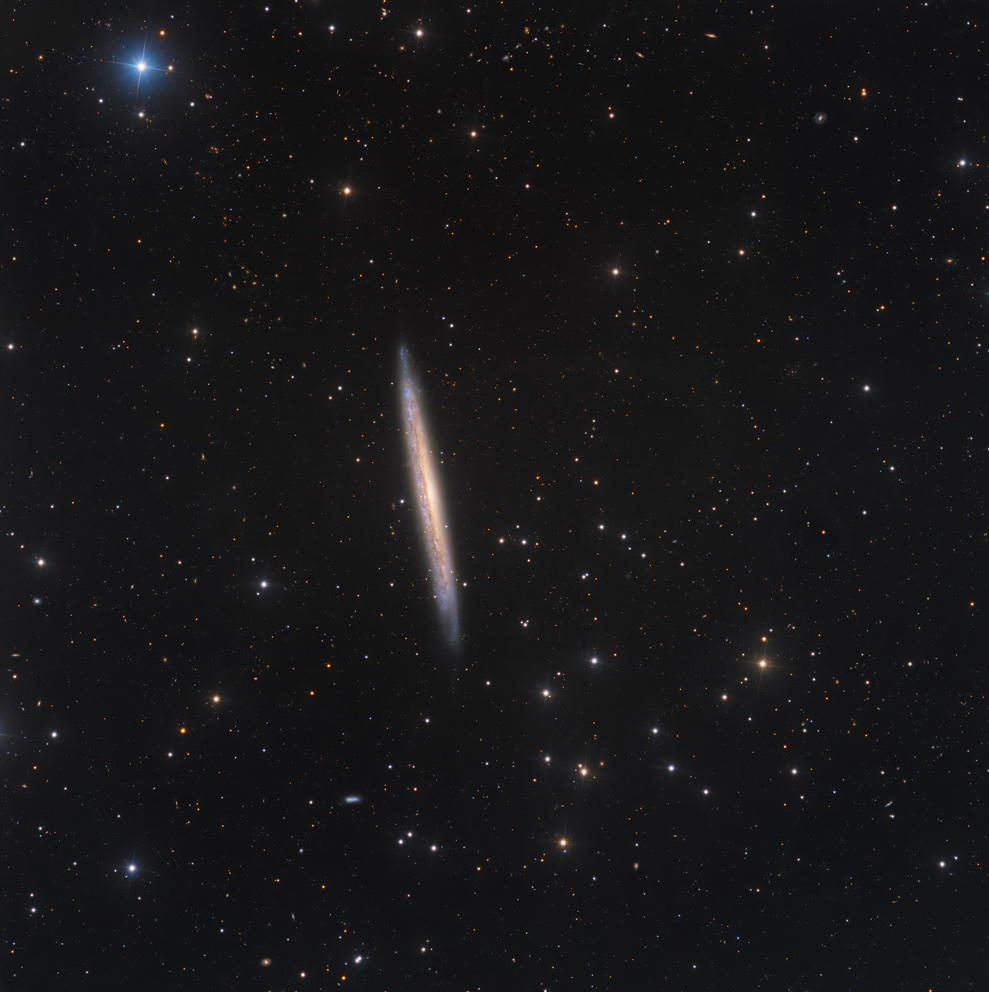
NGC 5907: This is a somewhat dim (magnitude 11.28) spiral galaxy in Draco, presenting to us edge on. It is generally estimated to be about 50 million light years from Earth, and
about 150,000 light years in diameter (somewhat larger than our Milky Way galaxy).
A few years ago, a highly-skilled amateur named R. Jay GaBany discovered very faint trails looping around this galaxy, now thought to be evidence of a death dance between a dwarf galaxy and this galaxy; this
took place over a period of about 4 billion years, and resulted in the dwarf galaxy being absorbed into NGC 5907. I was curious whether I could capture those trails, called "tidal tails," and,
indeed, I was able to get one loop (which, probably not coincidentally, is very elliptical in shape, with the center of NGC 5907 very close to one focus of that ellipse). If you click on the image, it
will toggle to a negative image of the field; the loop to the right of the galaxy is that tidal tail.
Astronomers long had known that this galaxy was warped (not perfectly flat, as would be expected), but they did not know why; NGC 5907 was thought to be an example of a warped galaxy in isolation
(meaning that there was no other significant galaxy close by to warp it with gravitational pull). Jay GaBany's discovery changed all that.
As an aside, I think it's really cool that astronomy is a science in which true amateurs still regularly make significant discoveries!
As I have noted on other images, I am always charmed by the huge number of small background galaxies in my images. This one has that even more than most; in particular, there is a whole group of galaxies
at the top of the image just to the right of center (it's easier to tell they're not stars in the larger images).
This is the second time I have imaged this target. I had imaged it nineteen years earlier from my yard. If you want to compare that image to this one (to see what much darker skies, better equipment,
and (hopefully) more skill can do, click here.
Copyright 2021 Mark de Regt